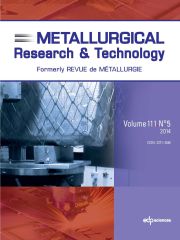Article contents
Alternative ways of making steel: retrospective and prospective
Published online by Cambridge University Press: 25 November 2004
Abstract
The Steel Industry today is a large and capital-intensive industry, which has reached a high level of sophistication, complexity and efficiency. This benefits the consumer, as the price of steel has been steadily decreasing, which helps bring down the price of consumer goods. Steelmaking has therefore become focused on a small number of process routes, which connect together standard, mainstream and high performance technologies. It seems therefore that the industry is very mature and that little leeway is available for change, as past progress has already brought it close to physical limits. This is a view of the Steel Industry, which is contemporary and central to the strategy of this business. A Steel Mill that does not operate within the paradigms of the mainstream state-of-the art technologies will be doomed by economic troubles and eventual bankruptcy. However, Steel or Iron have remained at the core of civilization for roughly 3,000 years and the model of the Steel Industry discussed above is only roughly 30 years old. There have been many more different models in the past, from Prehistory to History, and it is likely that even more will emerge in the Future. Indeed, it is reasonable to assume that Iron and Steel will continue to be used for a very long time. The present paper discusses Steel from the standpoint of an Enduring Material and the Steel Industry from that of a Cumulative Technology and explores how these two important concepts have led to industry changes in the Past and will most likely contribute to more changes in the Future.
- Type
- Research Article
- Information
- Metallurgical Research & Technology , Volume 101 , Issue 11: Centenaire de la Revue de Métallurgie , November 2004 , pp. 937 - 955
- Copyright
- © La Revue de Métallurgie, 2004
- 6
- Cited by


